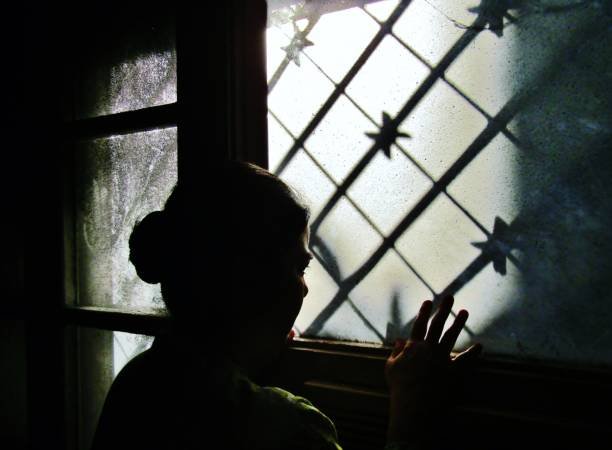By: Dr Ratan Bhattacharjee
Invaders or dwellers – all have been charmed by the beauty of Manipur which is burning today in the ethnic clashes and class conflicts. Even St. Clair Grimwood called Manipur as “a pretty place more beautiful than many show places of the world”, Ethel St Clair Grimwood, whose husband tried to invade Manipur was a British woman who became known as “the heroine of Manipur‘ as she was the only person among the British forces familiar with the terrain. Her role was lionized in the British press though Manipur people did not accept it as a truth. Manipur is called “a flower on lofty height” by the Japanese people but, the most fitting tribute was paid by Pandit Jawaharlal Nehru, who called it as the “Jewel of India”.
Unfortunately politicians are trying to give the clashes a communal colouring for reaping electoral benefits in the forthcoming elections. Manipur became a princely state under British rule in 1891 after the Anglo-Manipur war, the last of the independent states to be incorporated into British India. Manipur is not only famous for its rich culture and traditions but also for its vibrant dance forms and music, scenic landscapes and delectable local cuisines. Magnificent Manipur, literally meaning a “jewelled land’ is studded with lush hills, emerald green valleys, turquoise lakes, cascading rapids and deep dark woods. Its amazing beauty has won admiration from every visitor Lord Irwin described it as the ‘Switzerland of India’. St. Manipur literally meaning “A jewelled land” nestled deep within a lush green corner of Eastern India bordering Myanmar. It is surrounded by blue hills with an oval shaped valley at the centre, rich in art and tradition and surcharged with nature’s pristine glory. The people of Manipur believe in simplicity and are extremely friendly, making it a must-visit destination in India. It is an undeniable fact that with the emergence of channels like Korea’s KBS World Arirang Tv, the popularity of Korean popular culture became more widespread, and Manipur soon started to resemble a mini-Korea. Long ago , the British army attacked the palace of Manipur and killed many innocent Manipuris on 24 March, 1891 for arresting the Prince.
Subsequently, those British officials were murdered leading to the declaration of war on 31st March, 1891 against Manipur. As per the Aadhar Statistics the Manipur population in 2022/2023 is 3,008,546 (3.01 Millions) as compared to last census 2011 is 2,855,794. Growth rate of 5.35 percent of population increased from year 2011 in Manipur. till 2018. As per latest census, Hindu are majority in Manipur state. Hinduism constitutes 41.39% of Manipur population. In all Hindu form majority religion in 4 out of 9 districts of Manipur state. The data for 2022 & 2023 is under process and will be updated in few weeks. Hinduism is practiced by 41.39% population of the Manipur according to 2011 census of India. It is in plurality with Christianity (41.29%). Hindus are mostly Meitei people (Manipuris), who are concentrated in the Imphal Valley and other plain districts of Manipur.
The Kuki ethnic group, which originated in the Mizo hills, includes the Chins of Myanmar, the Mizos of Mizoram, and the Kukis of Bangladesh. All three groups share the same ancestry. The collective name for them is the Zo people.Mar 19, 2023 The Kukis—almost all of them Christians—have not discriminated between Christian or Hindu The Kuki-Chin languages (also called Kuki-Chin-Mizo, Kukish or South-Central Tibeto-Burman languages) are a branch of 50 or so Sino-Tibetan languages spoken in northeastern India, western Myanmar and southeastern Bangladesh. Most speakers of these languages are known as Mizo in Mizoram and Manipur.
Kuki, a Southeast Asian people living in the Mizo (formerly Lushai) Hills on the border between India and Myanmar (Burma) and numbering about 12,000 in the 1970s. They have been largely assimilated by the more populous Mizo (q.v.), adopting their customs and language.
The Kukis as an ethnic group including multiple tribes originally inhabit the Northeastern States of India, including Manipur, Mizoram and Assam; parts of Burma (now Myanmar), and Sylhet district and Chittagong hill tracts of Bangladesh on Jun 19, 2023. The Kuki constitute one of several hill tribes within India, Bangladesh, and Myanmar. Most of the people live below poverty line. The upper class and the lower class divide is too sharp to be ignored. Comparatively the tribal people are poorer. They are marginalized for ages. Women are the bread winners for the family in most cases and they are usually the first hit by any trouble that occurs in this land.
The violence that broke out in Churachandpur, a town just south of the state capital Imphal, on May 3, was not basically a religious clash. It is an open secret that it was more ethnic than religious. A Kuki-led tribal solidarity march occurred in ten of the state’s sixteen districts. As the Meitei organised counter-protests and blockades, clashes spread across Manipur. Women were part of some of the mobs The COCOMI has been alleging that many Kukis are illegal migrants from northwestern Myanmar where racially similar Chins live and that many Kuki villagers cultivate poppies in hillside farms. Women came to the forefront because Meitei women are known for their unique roles and their status in history. Women in Manipur are known for their active economic participation as well as their contribution towards political reforms in Manipur.
Despite the patriarchal society women, they enjoy freedom and equal rights with men. Chin-Kuki group consists of Gangte, Hmar, Paite, Thadou, Vaiphei, Zou, Aimol, Chiru, Koireng, Kom, Anal, Chothe, Lamgang, Koirao, Thangal, Moyon and Monsang. The term Chin is used for the people in the neighbouring Chin state of Myanmar whereas Chins are called Kukis in the Indian side. Irom Chanu Sharmila known as the ‘Lady of Manipur’ or “Mengoubi” (“the fair one”) is an Indian civil rights activist, political activist, and poet from the Indian state of Manipur, which is located on the north-eastern side of India. Meiteis were carrying out strikes against the majority community (Meiteis) of Manipur. It is alleged that Kukis have targeted Meitei Christian churches and razed them some in Manipur have been trying to portray the conflict between Metieis and Kukis in Manipur as a Hindu-Christian strife. This narrative has been given a big publicity by a group of politicians and organizations in the West purposefully and this is maligning the name of India. Although there has been a perception that the tensions are religiously based, this is not in fact the case: the tensions are ethnically rooted. For example, two tribal groups, the Meitei, who make up more than half of Manipur’s population, and the Naga have clashed often.
Although there has been a perception that the tensions are religiously based, this is not in fact the case: the tensions are ethnically rooted. Before the advent of Christianity, the Meiteis had embraced Hinduism and the tribals practiced animistic religion. Manipur and its people were almost unknown to the outside world until the arrival of the Western Missionaries.An archbishop in the troubled Indian state of Manipur has said that around 249 churches belonging to one ethnic group were destroyed in the first 36 hours of a wave of violence in May. Still this is not the outcome of any religious violence as is explained by over implication. Why the churches were burnt proper investigations need to be made.
Shouting on Manipur without delving deeper into the ethnic issues is like seeing an elephant by the blind men of Hindustan. Some who touched the ears of the elephant and some who touched the tail of the elephant and some who touched the legs of the elephant were all giving a wrong account. This tale should not be repeated in Manipur when we come out to shout for Manipur. Only then the proper solution can be found and truth will be out. Recently the U.S. ambassador to New Delhi expressed sorrow over the ethnic violence in India’s northeastern state of Manipur while noting it was an Indian matter It is truly tragic that nearly 120 people have been killed in clashes between members of the Kuki tribes – who live in the hills, and receive economic benefits and quotas for government jobs and education – and the Meiteis – who control the more prosperous lowlands. The class conflicts are always at the root of the ethnic clashes and we have seen this when we go to analyse the reasons for communal clashes too in Bengal and other parts of India as Irfan Habib or Romia Thapar and other modern historians showed it in their analysis of the communal riots in India since the pre-independence days.
Rumours spread in India faster than the wind as George Orwell showed it in ‘Shooting an Elephant’. The flower on the lofty height cannot be allowed to dwindle. We cannot for any price lose this jewel of India. We should rewrite the story of Manipur anew. (The author is an Affiliate Faculty in Virginia Commonwealth University and a multilingual columnist may be reached at profratanbhattacharjee@gmail.com)







